
How to Stay Cool in Extreme Heat
In June 2021, sweltering hot weather made life miserable for people across British Columbia. The week-long “heat dome” was so named because high atmospheric pressure trapped stifling air in place. It contributed to at least 595 deaths—and possibly as many as 740. Climate change makes extreme events like this more likely in communities across Canada; in coming years, we can expect to suffer through hotter, longer and more frequent heat waves.
And they’re dangerous. Older people, who may have poor circulation or underlying medical conditions, are at higher risk of overheating quickly. So are babies and small children, who don’t sweat as much as adults. Other at-risk populations include those experiencing homelessness, addictions or mental illness.
But even healthy younger adults can run into problems, particularly if they work or exercise outdoors or don’t have air conditioning at home. A full 30 percent of the heat dome-related deaths last year were in people under 70. “My apartment in Vancouver was incredibly hot,” recalls Sarah Henderson, a 46-year-old scientific director of environmental health services at the BC Centre for Disease Control. “I slept on my balcony. People were sleeping in the parking lot of my building!”
Our country’s annual temperatures are rising two to three times faster than the world average, yet we Canadians still seem more accustomed to harsh wintry conditions than to summer weather. Here’s expert advice on how to stay cool in extreme heat.
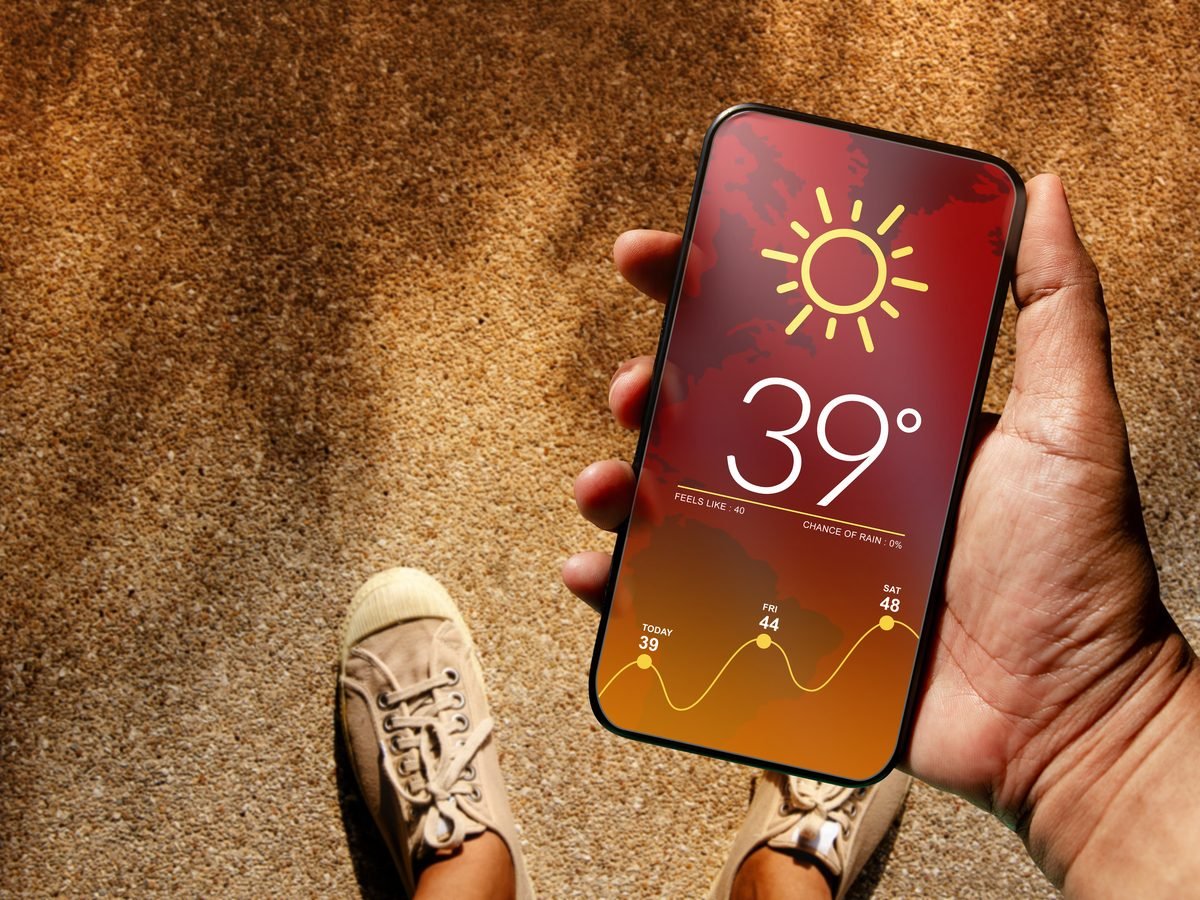
Plan Ahead
It may sound obvious, but it’s important to regularly check a weather forecast app so you’re not caught off guard. “It could be a full 10 degrees hotter one day than it was the day before,” says Dr. Heejune Chang, a medical officer of health at the Winnipeg Regional Health Authority. “If there’s a forecast for an extreme heat event, it’s usually reported at the start of the day.”
Knowing there’s heat ahead will help you choose what to wear and plot out your day’s activities. You might pick an earlier time to go jogging, before the sun is directly overhead, or exercise indoors on the treadmill. You may even decide to juggle your job duties differently that day. “If you work outdoors all day, you’ll need more breaks to rest and hydrate,” says Chang.
If you have a loved one or neighbour who lives alone and without air conditioning, particularly someone who’s vulnerable, reach out before they run into trouble. Invite them to stay with you, or make plans to take them somewhere cool.

Dress for the Heat
The wrong clothing can trap both heat and perspiration, says Dr. Mark Leung, director of the University of Toronto’s enhanced skills program in sport and exercise medicine. “Avoid waterproof fabrics, which aren’t breathable. And don’t wear cotton unless you can keep changing your shirt after it soaks up sweat. Otherwise it acts as a barrier and reduces the efficiency of losing heat by sweat.”
Wear clothes that are loosely woven, lightweight and a relaxed fit for better air flow. Sportswear labelled as “fast drying” or “quick dry” is designed to wick away sweat; some high-tech clothing even includes nanoparticles for UV protection.
“Our heads are where we gain and lose a lot of heat,” Leung adds. Just as you might cover your head with a toque in winter to conserve warmth, shielding it with a beaked or widebrimmed hat in summer can reduce the amount of radiant heat your head absorbs from the sun.
The parasol has never taken off in Canada as a must-have summer accessory, but perhaps it’s time to reconsider. “That would provide a barrier, especially if it’s completely opaque,” says Leung. A 2020 experiment at Japan’s Daido Institute of Technology showed that the temperature under a parasol can be cooler by several degrees.
Here are more practical tips on how to beat the heat this summer.
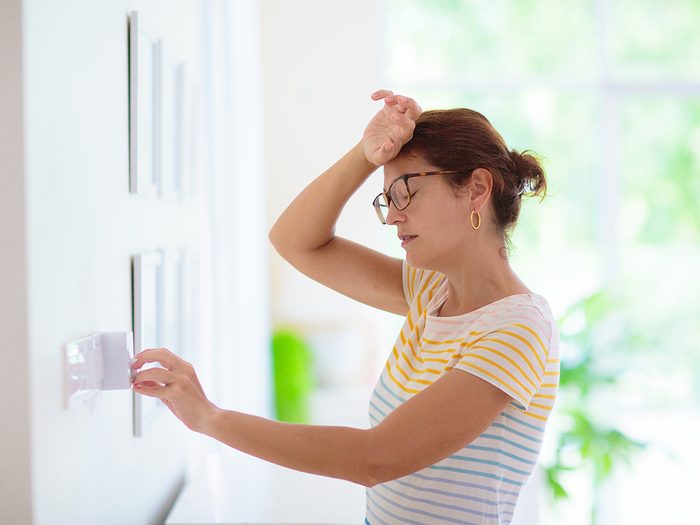
Keep Your Home Cool
A whopping 96 percent of the people who died from B.C.’s 2021 heat dome became overheated in a residential setting. Although air conditioning is the best way to keep our homes at a comfortable temperature, almost 40 percent of Canadian homes didn’t have even a window unit in 2019, let alone a central-air system.
Henderson points out that our houses and apartment buildings are designed to hold on to heat. “We have Canadian winters, so we insulate our homes and use double-glazed windows,” she says. “Once we warm up a place, it stays warm.” During an unrelenting hot spell, the indoor temperature can rise with each passing day. Turning on your oven or another appliance that gives off heat will worsen it.
A crucial way to keep your home from heating up is to stop the sun from shining directly on the windows. Close the curtains during the day, or install awnings or plant shrubs that block the windows. You can buy shade screens for your patio that can be rolled down to keep the sun from hitting the glass doors.
If you use an air conditioner, set it to between 22 and 25 C. At night, when it’s cooler outside, shut off the unit and open your windows instead. Use exhaust fans when you shower, to get rid of humidity, and when you cook, to get rid of heat. These tips will help save you money and use less energy.
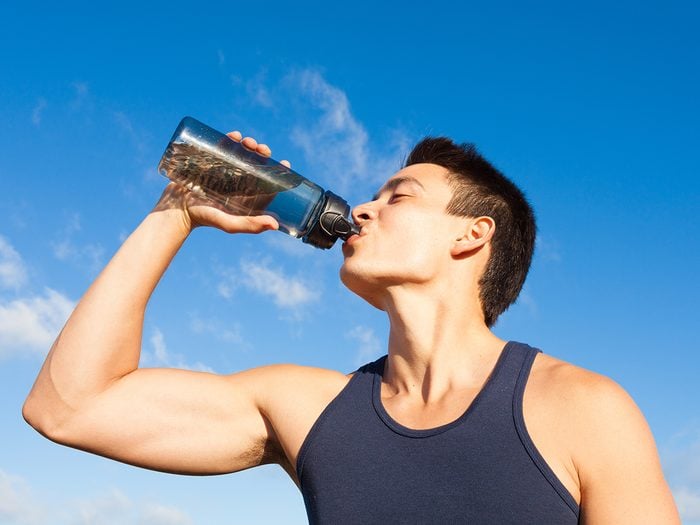
Stay Hydrated
Water is vital to keeping your body cool, and in hot weather you’ll need more of it because you’re sweating. On a regular day, most healthy adult women need about two litres of water, and men need three. Your requirements during an extreme heat event will be higher.
“You also need to drink more frequently than you normally would,” Chang says. “You can’t just guzzle water in the morning and decide you’re good to go.” Otherwise your body won’t be able to maintain the constant level of hydration it needs to function properly.
Stop and drink water even if you’re not feeling thirsty yet. “That sense of thirst in your mouth is a late sign and means you’re already dehydrated,” says Dr. Finola Hackett, a family physician working in Alberta and Yukon.
Another clue you’re not drinking enough: your urine is darker and you aren’t going to the bathroom as often, because your kidneys are working hard to concentrate what fluid is available in your body. Subtler signs of dehydration, such as trouble concentrating on your work or feeling tired, might go under your radar.
Don’t rely on beer or coffee to shore up your fluid levels. “They can both be dehydrating over time. Water’s best,” says Chang. “Athletes training in hot weather might consume drinks with electrolytes, but the general public doesn’t need them.”
Here’s what can happen when you start drinking eight glasses of water a day.
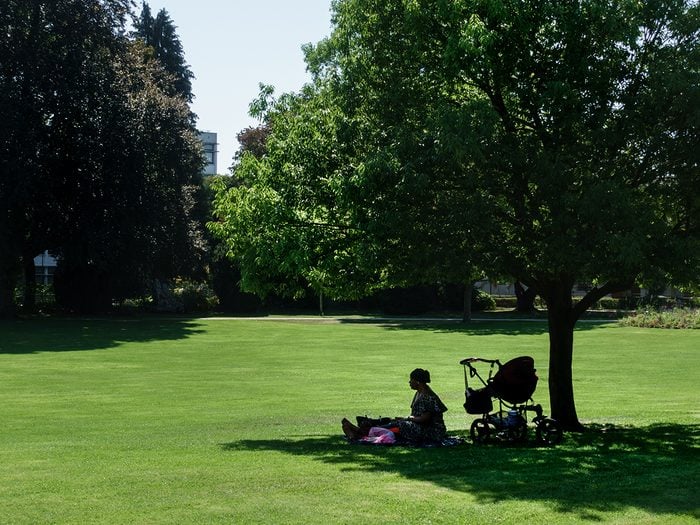
Take Breaks from the Heat
Cooling off isn’t an instant process, even in an air-conditioned environment. Researchers at the University of Ottawa recently developed the world’s only chamber that measures body temperature all the way to the core, and they have reported that it can take hours for the heat stored in our bodies to dissipate completely. If you spend your day outdoors, a 10-minute break in the shade may not be enough. Once you step back into the sun, you’ll quickly warm up again.
Try to stay out of the heat for several hours a day. During hot weather, many municipalities open up cooling centres—indoor, air-conditioned public spaces. You can also seek out a library, community centre or mall.
“Even outdoors, if you’re in the shade, at least you’ll get that air movement,” says Chang. You will also feel cooler because the sun’s radiation that your skin would normally absorb is blocked. Patio umbrellas containing UV-blocking properties may be especially effective at producing comfortable-feeling shade.
A park or wooded area also offers abundant shade, as well as a reprieve from pavement and asphalt. These surfaces tend to absorb the sun’s heat and create what’s known as an urban “heat island,” raising the air temperature by as much as 4 C.
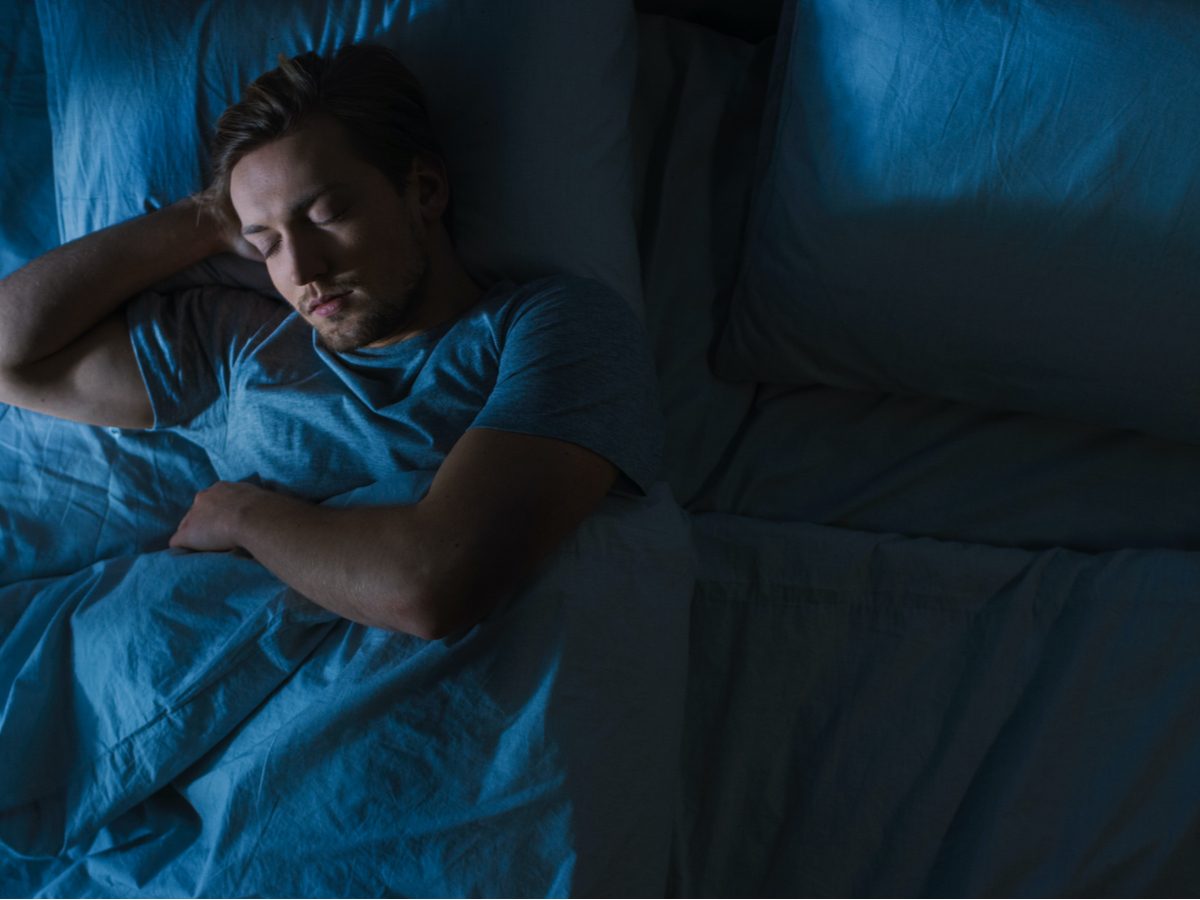
Keep Cool at Night
Cooling yourself for a good night’s sleep is critical, says Hackett. “It’s our body’s chance to recuperate and do repairs.” Although it’s not fully understood why, quality sleep at night helps us cope better with hot days.
Unfortunately, homes that heat up during the day don’t necessarily normalize at night, even if the temperature falls outside. After B.C.’s extreme weather last year, Henderson and her research team analyzed temperature readings collected by Ecobee, a Canadian maker of smart thermostats. Many fatalities had occurred overnight, and Henderson discovered that the temperature in these homes peaked four hours after the peak outdoors. “At 9:00 or 10:00 p.m., that’s when it was hottest in the home,” she says. “So trying to reduce that heat exposure at night is probably more useful than during the day.”
In the early evening, as soon as it gets cooler outside than inside, create a cross-breeze in your home. Open a window at each end of the house to keep air moving through. A fan placed at each opening will help pull the outdoor air in and push the indoor air out.
A cool shower or bath, or a damp towel around your neck, may offer some relief at night. You can also buy special “cooling pillows,” which are designed to improve air flow and wick away sweat.
Seek out the coolest part of your home for sleeping, like a basement if you have one. Or you can do what Henderson did and snooze on the balcony or in a backyard tent. “It may still be 23 degrees outside, but that may be a heck of a lot cooler than inside your house,” she says.
Follow our sleep hygiene checklist to catch some quality shut-eye.
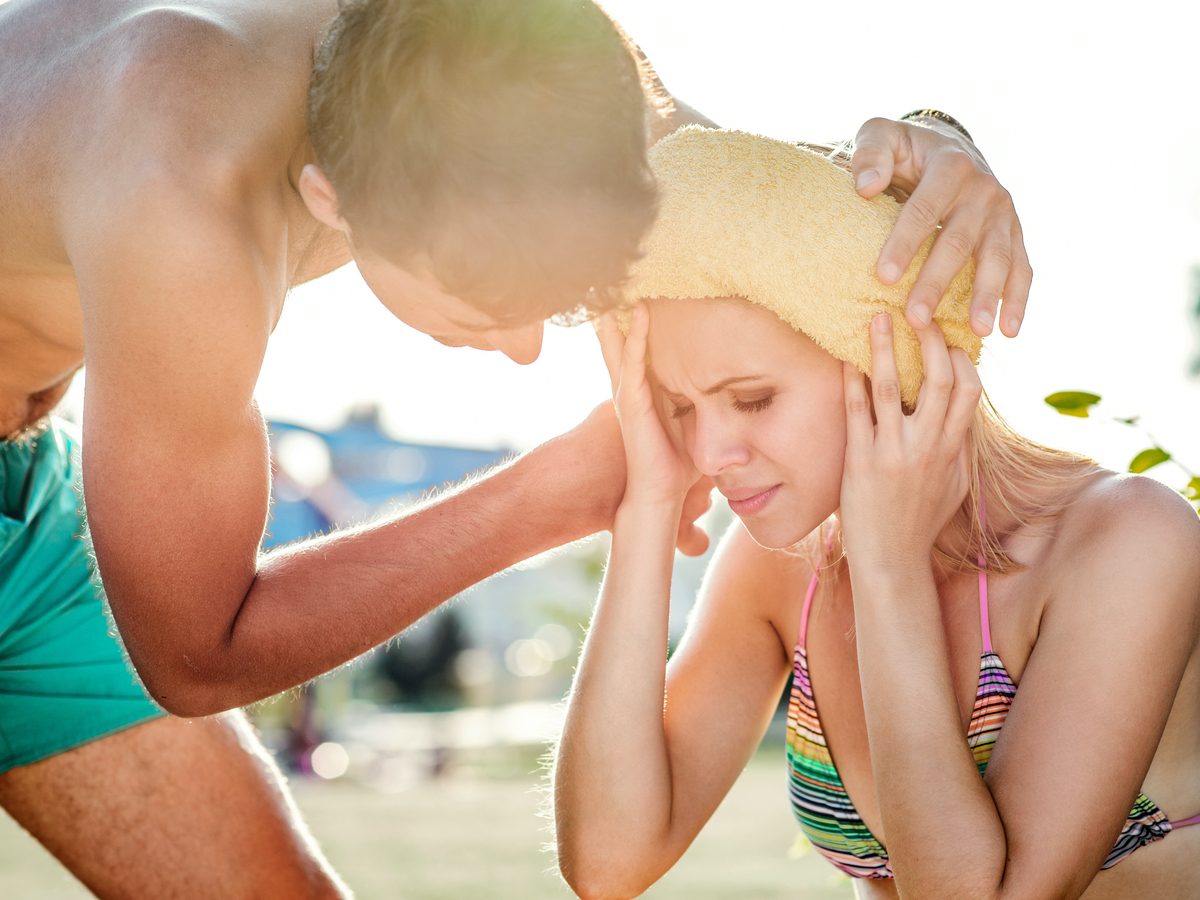
How to Respond to a Heat Emergency
Signs that the body’s self-cooling system is failing can include a headache, vomiting, pale skin, fainting, irritability and weakness. Eventually, heat stroke can occur: the person might be confused or drowsy. They may have a racing pulse, and their skin may be hot and dry. (Learn to spot more telltale signs of heat stroke.)
At the earliest signs of trouble, bring an overheated person into a cool building or shade. Give them water to drink and have them lie down. Cool them off by removing any excess clothing and immersing the person in cold water, if it’s available.
Dr. Mark Leung offers this quick trick for heatstroke: “Place ice packs in all the folds of the body— the armpits, the groin, around the neck. These areas have direct access to the network of blood vessels and will help you cool down the core body temperature.”
Heat stroke is a medical emergency. It can be fatal or cause permanent organ damage. If the person isn’t improving or their symptoms worsen, call 911.
Here are 20 more symptoms you should never ignore.
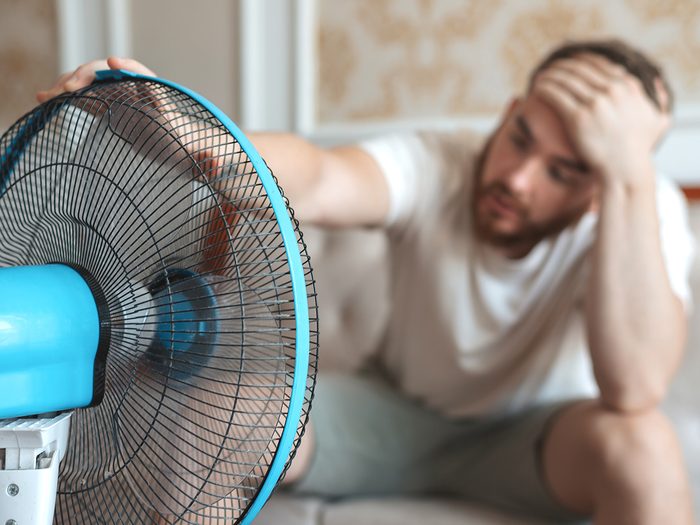
Hot Temperature No-No’s
Things to avoid doing during sweltering weather:
- Don’t knock back too much water too quickly. Drinking more than 1.4 litres an hour—about three regular bottles of spring water— can dilute your sodium levels and lead to confusion and seizures.
- Don’t underdress in order to cool off. Although it may seem counterintuitive, cover up. “Loose-fitting pants and long-sleeved shirts can have a cooling effect, versus your skin being directly under the sun,” says Dr. Finola Hackett.
- Don’t use fans if the air in the room is hot and the windows are closed. A fan will blow the suffocating air around, but it won’t lower the temperature. In fact, the fan’s running motor might make a room even hotter.
- Don’t respond to a 30-degree forecast in May the exact same way you would in August. “If it’s an unusually hot day early in the season, the risk of heat exhaustion is up, because your body hasn’t acclimatized after winter,” says Dr. Heejune Chang.
How many of these air conditioner myths do you still believe?
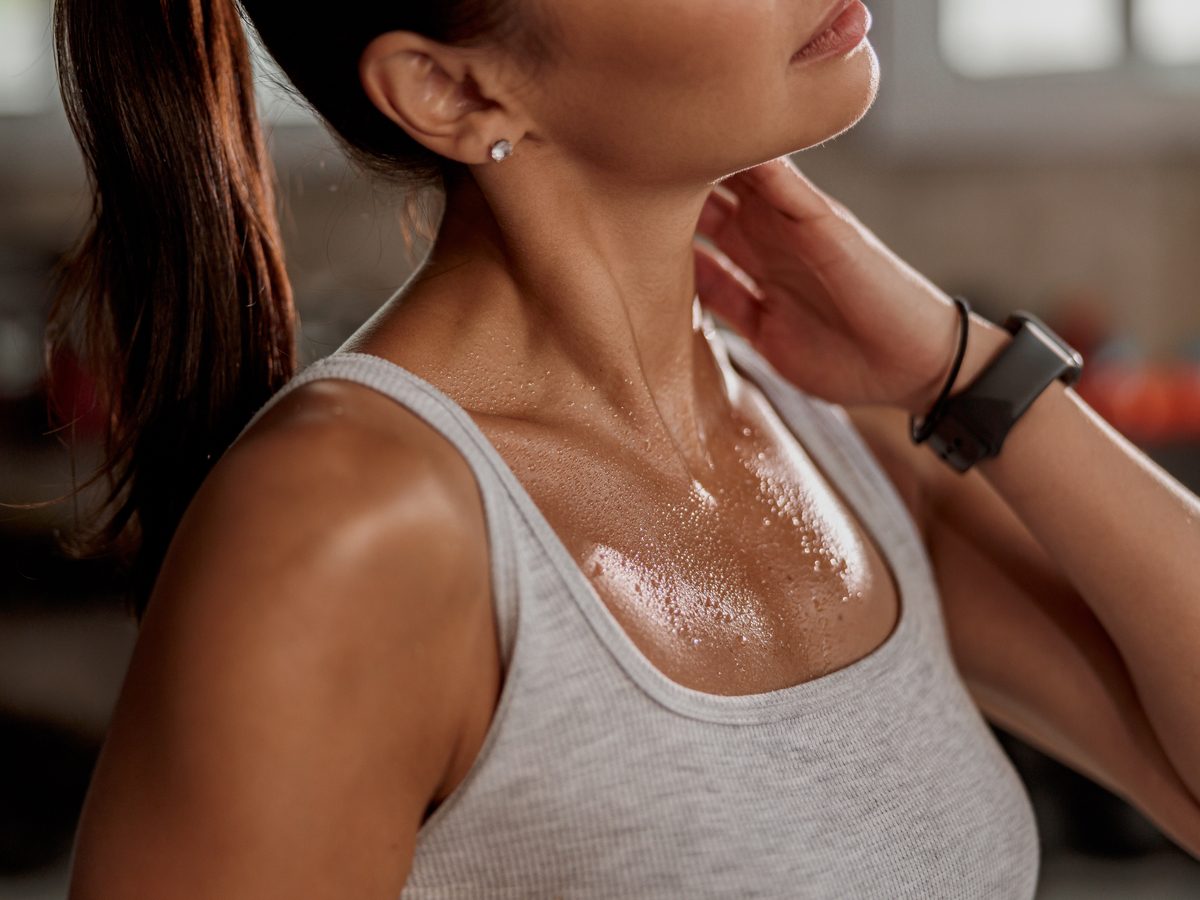
How Our Bodies Cope With Extreme Heat
Brain
The hypothalamus acts like a thermostat and controls the body’s response to heat by sending signals to the circulatory system, glands and other areas. Extreme Heat Risk: Disabilities that affect the brain and nervous system, like Parkinson’s disease or spinal cord injuries, can prevent the hypothalamus from regulating body temperature.
Heart and Bloodstream
Blood vessels dilate, and the heart pumps blood closer to the skin to release heat. Extreme Heat Risk: Higher demand on the cardiovascular system can increase risk for people with heart conditions.
Lungs
Exhaling is another way the body releases excess heat. Extreme Heat Risk: Hot weather worsens air pollution, aggravating symptoms for people with issues like asthma or chronic obstructive pulmonary disease.
Kidneys
When sweating causes fluid levels to drop, the kidneys try to conserve more water by concentrating urine. Extreme Heat Risk: When the body is very dehydrated, the resulting low blood pressure and highly concentrated urine compounds can damage these sensitive organs.
Skin
Some of your body heat is used to evaporate sweat from the skin’s surface, which cools the body down. Extreme Heat Risk: In humid weather, sweat won’t evaporate as efficiently because there’s already so much moisture in the air.
Check out 10 sunscreen tips everyone should be following.
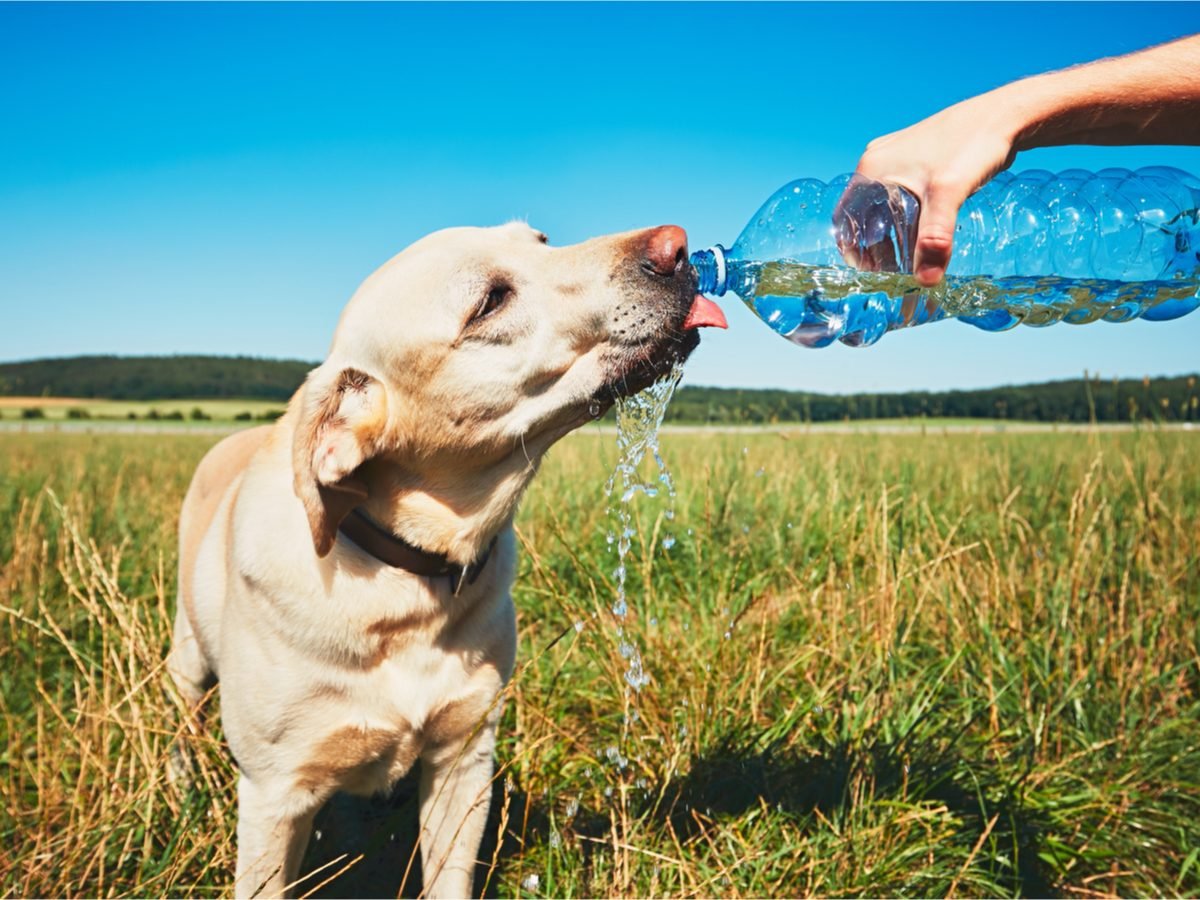
Protecting Your Pets
Humans aren’t the only ones who suffer in hot temperatures. Dogs can get heat stroke, and so can cats and other pets. Many safety guidelines for people—limit outdoor time, drink water, seek shade—are applicable to pets, as well. Here are some more tips:
- Never leave a pet unattended in a car, where temperatures can climb quickly. Be mindful of the heat in your home, too, if they’re going to be on their own.
- Brush your cat or dog’s coat to promote better air circulation, but don’t shave them. Their fur slows down their absorption of heat from the air.
- Keep pets with medical conditions, or those who are older or overweight, out of the heat as much as you can.
- No air conditioning? You can buy cooling products, like vests and mats, that, after being pre-soaked, slowly release evaporated water to help your pet chill indoors.
- Use a spray bottle to give your pet bird a gentle misting.
- Clean the cages of smaller creatures often, and throw away untouched food, so bacteria doesn’t have a chance to grow in the heat.
Now that you know how to stay cool in extreme heat, find out which city is officially the warmest place in Canada.